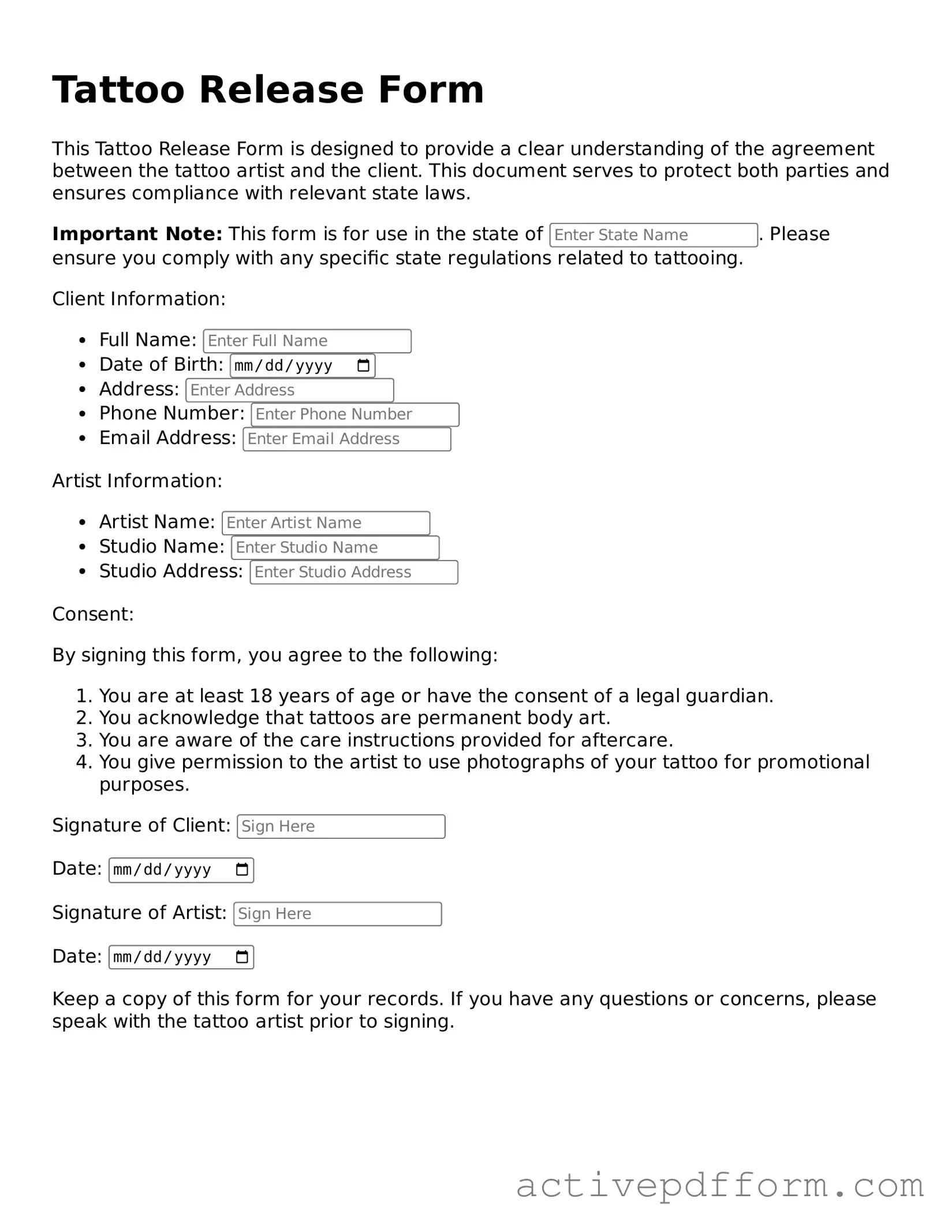What is a Tattoo Release Form?
A Tattoo Release Form is a legal document that allows a tattoo artist to obtain permission from a client to tattoo them. This form typically includes details such as the client's name, the design of the tattoo, and the location on the body where the tattoo will be placed. By signing this form, the client acknowledges that they understand the risks involved in getting a tattoo and agrees to the terms set by the artist or studio.
Why is it important to sign a Tattoo Release Form?
Signing a Tattoo Release Form is crucial for both the client and the tattoo artist. For the client, it serves as proof that they have given consent for the tattoo to be done. This can be important in case of any disputes or misunderstandings in the future. For the artist, the form protects them legally by documenting that the client was informed of the potential risks and complications associated with getting a tattoo, such as allergic reactions or infections.
What should I look for in a Tattoo Release Form?
When reviewing a Tattoo Release Form, ensure that it includes essential information such as your name, contact details, and a clear description of the tattoo design. The form should outline the risks involved, the aftercare instructions, and any disclaimers regarding the tattoo process. Additionally, check that it specifies the studio's policies on cancellations or changes to the design. A well-crafted form will also include a section for your signature and date, indicating your consent.
Can I change my mind after signing the Tattoo Release Form?
Once you have signed the Tattoo Release Form, it is generally considered a binding agreement. However, if you have concerns or wish to change your mind, it’s essential to communicate with the tattoo artist or studio as soon as possible. Many studios have policies regarding cancellations or rescheduling, but they may not allow changes to the design or cancellation without a fee after the form has been signed. Always clarify these details before proceeding with the tattoo.
